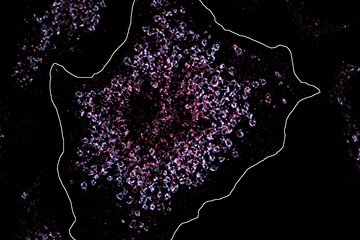50 years of technology transfer for the Max Planck Society
Since 1970 Max Planck Innovation has been successfully marketing inventions for medicine, technology and research
A pioneer of technology transfer in Germany turns 50: since Max Planck Innovation (MI) was founded in 1970 as a subsidiary of the Max Planck Society (MPG), it has been supporting Max Planck researchers to market their inventions. With the help of MI, industrial partners and newly founded companies have transformed thousands of ideas and findings into products for technology, medicine and research.

With 20 Nobel Prize winners since its foundation in 1948 and over 15,000 publications per year, the Max Planck Society is one of the best research institutions in the world. The basic research carried out at the current 86 institutes, in addition to new findings, repeatedly produces important inventions that have great economic potential and can be of considerable social benefit.
Max Planck Innovation supports the scientists in further developing these inventions through partners from industry and bringing them onto the market. "With its outstanding commitment, Max Planck Innovation has contributed to transferring numerous research approaches into products and services that improve people's lives worldwide," says Martin Stratmann, President of the Max Planck Society.
Real-time films from the body and drugs for rare diseases

One such groundbreaking MPG invention is the FLASH technology. In 1985, the technology made it possible for the first time to reduce the recording times in magnetic resonance tomography (MRT) by a factor of 100, thus helping to make MRI one of the most important imaging methods in clinical diagnostics. The invention, which was developed at the Max Planck Institute for Biophysical Chemistry, is used worldwide by all common magnetic resonance tomographs and allows fast, non-invasive detection, among other things, of tumors, organ injuries or slipped discs. The current further development FLASH II even allows real-time films to be recorded from inside the body, thus creating new possibilities for diagnosing and accompanying surgical interventions.
Another breakthrough discovery has led to the development of an entirely new class of drugs. Researchers at the MPG observed that the mechanism of RNA interference (RNAi), a cellular process of gene deactivation, originally discovered in nematodes, is also effective in mammals and thus in humans. The spin-off company Alnylam Pharmaceuticals has already received approval for three drugs after many years of development work, which is based in particular on research at the Max Planck Institute for Biophysical Chemistry. Rare hereditary diseases can be treated with ONPATTRO©, GIVLAARI© and OXLUMO©. Eleven other candidates for RNAi drugs are currently at Alnylam in partly advanced phases of clinical development.
Another drug based on the results of the Max Planck Institute for Biochemistry has been used since 2006 to treat two different types of cancer. The drug with the name Sutent© from the former MPG spin-off Sugen is now one of the top-selling drugs of the pharmaceutical company Pfizer.
2,700 license agreements and 160 spin-offs
In 1970, today's Max Planck Innovation started under the name Garching Instrumente at the Max Planck Institute for Plasma Physics. It manufactured and sold technical devices that were primarily developed at the MPG institutes. From 1992 until it was renamed Max Planck Innovation in 2006, the company was finally known under the name Garching Innovation and, since restructuring in 1979, has focused on patenting and licensing inventions as well as spinning off companies. To date, over 4,500 inventions of the MPG have been accompanied. Around 2,700 license agreements for patents and know-how have been concluded with licensees who have brought a large number of products onto the market.
Since the beginning of the 1990s, around 160 spin-offs have emerged from different Max Planck Institutes, the vast majority of which were accompanied by Max Planck Innovation. They currently employ over 6,500 people. Overall, Max Planck Innovation was able to generate around 500 million euros in sales, which flowed back to the MPG, the institutes and the inventors. In addition to license income, this also includes income from the sale of company shares in spin-offs. With this balance, Max Planck Innovation is one of the most successful technology transfer institutions worldwide.
Successful assessment by international experts
“In 2016, the performance of Max Planck Innovation was assessed by an international commission. The experts from the Universities of Cambridge, Harvard, Leuven, MIT and the Weizmann Institute, who are responsible for technology transfer, as well as representatives from industry took a very close look at the company. Their conclusion: Max Planck Innovation is doing an excellent job”, says Max Planck President Martin Stratmann. “That spurs us all on, because the MPG has a special responsibility for the use of new scientific technologies for the benefit of society! We would like to thank Max Planck Innovation for their great merit in successfully implementing this responsibility together with us. The patenting, licensing and founding of innovative companies will continue to be of great importance to us in the future and we look forward to many more projects!"













